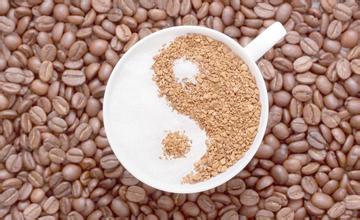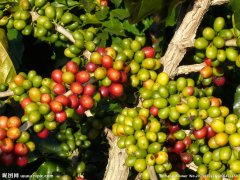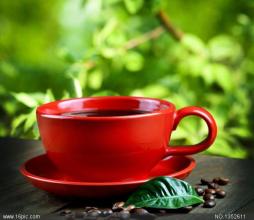Introduction of coffee producing areas and types in Ecuador Galapagos coffee in San Cristobal
In the mid-15th century, among fishermen fishing in the Pacific Ocean off western South America, there were legends of magical islands. It is said that the islands can sometimes be clearly seen from a distance, but disappear as the ship approaches; sometimes they look like a galleon, sometimes they take on the shape of a witch. Fishermen called the islands "the enchanted islands," thinking they might be ruled by demons like the banshees of the sea in the Odyssey. This island, known to fishermen as the "magic island," is today the Galapagos Islands.
In 1535, the Galapagos Islands were discovered by chance by Frei Thomas de Berlanga of Spain and others. Thomas was born in 1487 on the banks of the Duro River in the Spanish province of Soria. He was the fourth bishop of Panama at that time. He was ordered to Peru. When his ship set out from Panama on February 23, under the impact of a strong current, they were carried to an unknown sea in the outer ocean. On March 10, an island in the Galapagos Islands was discovered. With only two days of fresh water left on board, the sailors landed in lifeboats and found plenty of seals, turtles, giant tortoises that could carry people and viper-like iguanas on the island, but they could not find fresh water, so they headed for another larger island more than 20 kilometers away. As there was still no wind, it took them days to get there, the water ran out quickly, and they had to starve, including the horses on board.
When Thomas and his crew landed on the island, they frantically searched for water and were so thirsty that they squeezed juice from the fat petals of cacti to drink. Finally found water in a ravine in a rock. Thomas attributed it to God because it was Good Friday and they had celebrated Mass piously before setting out in search of water. Thomas would never have known, however, that the island they landed on was the only one in the Galapagos with plenty of fresh water, today Saint Cristobal.
San Cristobal is a large island in the Galapagos Archipelago. At an altitude of 410 meters, there is a small lake called El Junco. The lake forms several streams flowing along the rocks and volcanic rocks on the southern slope of the island. Fresh water rich in minerals nourishes the land of San Cristobal, making the soil here always moist and fertile. It provides the most rare conditions for the growth of coffee here.
In 1875, 340 years after Frey Thomas de Berlanga discovered the island, an indigenous man named Cobos arrived on San Cristobal Island, where he established the Hasenda Coffee Plantation and planted about 100 hectares of arabic bourbon trees. Because the plantation is located between 140 meters and 275 meters above sea level, the climate is equivalent to the inland climate between 915 meters and 1830 meters, and the unique geographical conditions are suitable for the growth of super hard coffee beans (SHB) with high acidity, so this high quality coffee is settled here.

Important Notice :
前街咖啡 FrontStreet Coffee has moved to new addredd:
FrontStreet Coffee Address: 315,Donghua East Road,GuangZhou
Tel:020 38364473
- Prev

BlackBerry caramel sweet sweet Panamanian Emerald Manor (La Esmeralda) Panamanian boutique
Boutique coffee is fresh coffee. Whether it's food or drink, of course, the fresh the better, and so is boutique coffee. High-quality coffee should keep the coffee beans fresh before making, including the preservation of baked beans, and grind the coffee beans into powder before making, which is also to retain its original and best flavor. And the way of making hand-made coffee is such a way to make high-quality coffee.
- Next

How many ways does Mexican coffee introduce Aldura coffee?
Non-alcoholic Mexican coffee often goes with milk. Heat a cup of milk, a teaspoon of cinnamon powder and a teaspoon of vanilla powder in a pot at medium temperature, not too hot, and do not boil the milk. Then add the cocoa powder, dissolve and stir well. If you like chocolate, you can use chocolate paste instead of cocoa powder and milk. Let the milk dry for about 5 minutes, wait until
Related
- Does Rose Summer choose Blue, Green or Red? Detailed explanation of Rose Summer Coffee plots and Classification in Panamanian Jade Manor
- What is the difference between the origin, producing area, processing plant, cooperative and manor of coffee beans?
- How fine does the espresso powder fit? how to grind the espresso?
- Sca coffee roasting degree color card coffee roasting degree 8 roasting color values what do you mean?
- The practice of lattes: how to make lattes at home
- Introduction to Indonesian Fine Coffee beans-- Java Coffee producing area of Indonesian Arabica Coffee
- How much will the flavor of light and medium roasted rose summer be expressed? What baking level is rose summer suitable for?
- Introduction to the characteristics of washing, sun-drying or wet-planing coffee commonly used in Mantenin, Indonesia
- Price characteristics of Arabica Coffee Bean Starbucks introduction to Manning Coffee Bean Taste producing area Variety Manor
- What is the authentic Yega flavor? What are the flavor characteristics of the really excellent Yejasuffi coffee beans?

